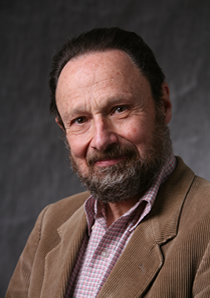
In recognition of his outstanding research contributions to a wide range of fields, including optical character recognition, document image analysis, geographic information systems, computational geometry, and interactive visual recognition, for his strong advocacy of designing adaptive systems that improve with use, for his leadership as professor and chair, in establishing the Department of Computer Science at the University of Nebraska–Lincoln on a firm foundation of teaching, research, and service during its formative years in the 1970s, and for his devotion to teaching and mentoring of students and faculty members, the School of Computing proudly inducts Dr. George Nagy into the Nebraska Hall of Computing.
George Nagy was born in Budapest in 1937. After WWII, a chance meeting between his father and a friend resulted in the family’s migration to Canada instead of Australia. He graduated in Engineering Physics from McGill University in 1959. On completing the MS at McGill and the PhD at Cornell, he joined IBM’s T.J. Watson Research Center, where he was assigned to work on Chinese character recognition because all the Chinese scientists were busy with Cyrillic OCR. He tells what brought him to Nebraska:
“During the summer of 1966, I was chopping rats at Cornell University. Frank Rosenblatt, who had been my thesis advisor five years earlier and whose interests had shifted from perceptron models of cognition to neurochemical experiments, was attempting to understand and confirm the recently reported transfer of learning through brain extracts in worms and rats. I was assisting in the extraction of synaptic end-bulb substance from the cortex of rats trained to run a maze while waiting for the accumulation of the statistical data that Frank had invited me to analyze.
In Frank’s absence, I frequently showed visitors through the lab. One visitor interested in learning more about neural networks was Don Nelson, director of the computing center of the University of Nebraska. After some discussion of brain models and my work at IBM on pattern recognition, he invited me to give two or three weeks of lectures to his staff — before the rise of computer science departments, many computing centers had a strong research orientation. Impressed by Don’s enthusiasm and wide knowledge, I set to work in the fall to prepare the material for the lectures. Already aware that most of the basic algorithms in pattern recognition and image processing were being continuously reinvented with perspectives from statistics, linear algebra, switching theory, combinatorics, control theory, and psychology, I programmed and illustrated each algorithm with the same example. I also read eclectically, and collected experimental applications. The lectures were well received, so immediately after my return I compiled my notes and submitted the material to theProceedings of the IEEE. This article not only became a Citation Classic, but next year, while on leave from IBM with the departments of informatique and of neurophysiologie at the Université de Montréal, my notes passed the trial by fire in a graduate course.
The first visit led to another invitation to Lincoln five years later. On the basis of that first agreeable experience, and impressed by the department’s talented young faculty and the university’s exceptional computing facilities, I eagerly accepted the chairmanship of the University of Nebraska Department of Computer Science in 1972. One thing that I recall learning quickly was that at conferences in those years, recruiting committees had to queue up at the tables of the few available computer science faculty candidates!”
At Nebraska, Nagy coauthored conference papers and journal articles with more than a half dozen faculty and many students. In 1985, the declining health of aging parents prompted the family’s return to the East Coast. Since then, he has been Professor of Computer Engineering at RPI where he teaches pattern recognition, probability, and digital design. He participates in research projects with former University of Nebraska–Lincoln colleagues, keeps in touch with several Nebraska students (a few of whom have already retired), and enjoys introducing new graduate students from around the world to the joys and frustrations of research (23 PhDs to date). He is a Fellow of the IEEE and of the International Association for Pattern Recognition, and received a Lifetime Contributions award from the document analysis community. In his spare time he enjoys skiing, sailing, and writing prolix surveys.
"State of the Art in Pattern Recognition," G. Nagy, Proceedings of the IEEE , vol. 56, #5, pp. 336-362, May 1968. Current Contents "Citation Classic", pp. 12, January 22, 1979.